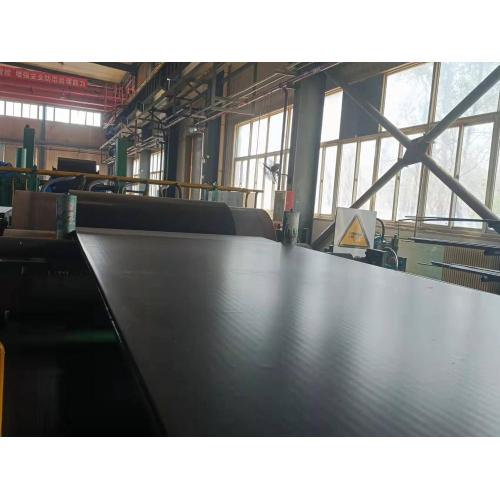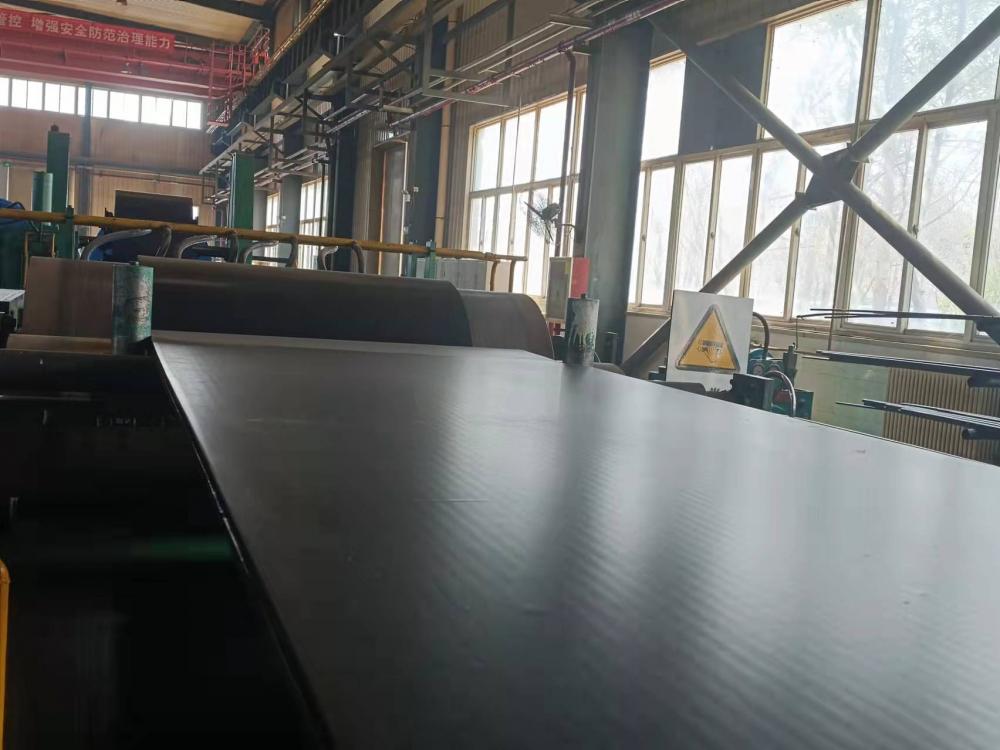Transportation: Ocean,Land
ST/S3150
Conveyor Belt – High-Strength, Flame-Retardant Industrial Solution for Demanding Material Handling Applications The ST/S3150 conveyor belt is engineered for industrial environments that demand exceptional durability, safety, and performance under extreme conditions. Designed with advanced
steel cord reinforcement and fire-resistant materials, this heavy-duty conveyor system delivers superior tensile strength—up to 3150 N/mm—which exceeds the capabilities of standard flame-retardant belts like ST/S2800. It’s ideal for continuous operations in mining, port logistics, cement manufacturing, and steel production where reliability and long service life are critical. Key Features & Technical Advantages This high-performance conveyor belt combines robust engineering with practical functionality. Its core structure features a precision-engineered steel cord carcass, typically with a diameter of 8.1 mm, ensuring minimal elongation and maximum load-bearing capacity over extended distances. The top and bottom cover adhesives are designed at 8–10 mm thickness, offering enhanced resistance to abrasion, impact, and chemical exposure. These properties make it particularly suitable for transporting abrasive or heavy materials such as coal, ore, clinker, and metal concentrates without premature wear or structural failure. Additionally, the belt exhibits excellent resistance to moisture, dust, oils, and acidic or alkaline substances—making it adaptable to harsh climates and corrosive workspaces common in underground mines, coastal ports, and industrial plants. What Sets This Belt Apart Unlike conventional rubberized belts, the ST/S3150 utilizes a layered internal steel curtain design that maintains dimensional stability even under repeated mechanical stress. This reduces the risk of delamination, edge cracking, or splice failure—common issues in high-impact applications. Its flame-retardant composition meets international safety standards (such as EN 15714 or ISO 15967), making it compliant with fire prevention regulations in confined or hazardous areas. Moreover, its low maintenance requirement translates into fewer unplanned shutdowns and lower operational costs over time—a key advantage for plant managers seeking to optimize productivity while minimizing downtime. Ideal Use Cases Across Industries In mining operations, this belt efficiently transports large volumes of raw ore from deep shafts to surface processing units, handling high drop heights and irregular material shapes without damage. At seaports, it supports bulk cargo handling for commodities like iron ore, grain, and coal, enabling seamless loading and unloading cycles that boost throughput. Cement facilities rely on its heat resistance and dust tolerance to move limestone, clay, and clinker through kilns and silos safely. Steel mills utilize it for moving sintered ore, coke, and scrap metal across blast furnaces and rolling mills—ensuring uninterrupted flow during high-intensity production shifts. Customer Feedback Highlights Users report consistent performance across multiple years of operation, especially in challenging environments where other belts fail prematurely. Many operators appreciate how the ST/S3150 reduces the frequency of belt replacements and improves overall line efficiency. One mining engineer noted, “We’ve seen a 40% reduction in maintenance labor since switching to this belt—it’s built to last.” Another user from a port terminal commented, “Even in humid tropical conditions, our belt remains flexible and secure—no more slippage or tearing.” Frequently Asked Questions Why choose a steel-cord conveyor belt over traditional fabric belts? Steel-cord belts offer significantly higher tensile strength, better elongation control, and longer lifespan—especially beneficial for long-distance conveyors carrying heavy loads. Is the ST/S3150 suitable for outdoor use? Yes, thanks to its weather-resistant cover layers and corrosion protection, it performs reliably in both hot and humid climates. How does it perform in high-temperature settings? It can withstand temperatures up to 120°C continuously, making it appropriate for cement kiln feeders and steel mill transport lines. Can it be customized for specific widths? Available in various standard widths including 800mm, 1000mm, and 1200mm, allowing flexibility based on throughput needs and installation space. For industries requiring dependable, safe, and efficient material transportation, the ST/S3150 conveyor belt stands out as a premium solution—combining cutting-edge technology with proven field performance.




